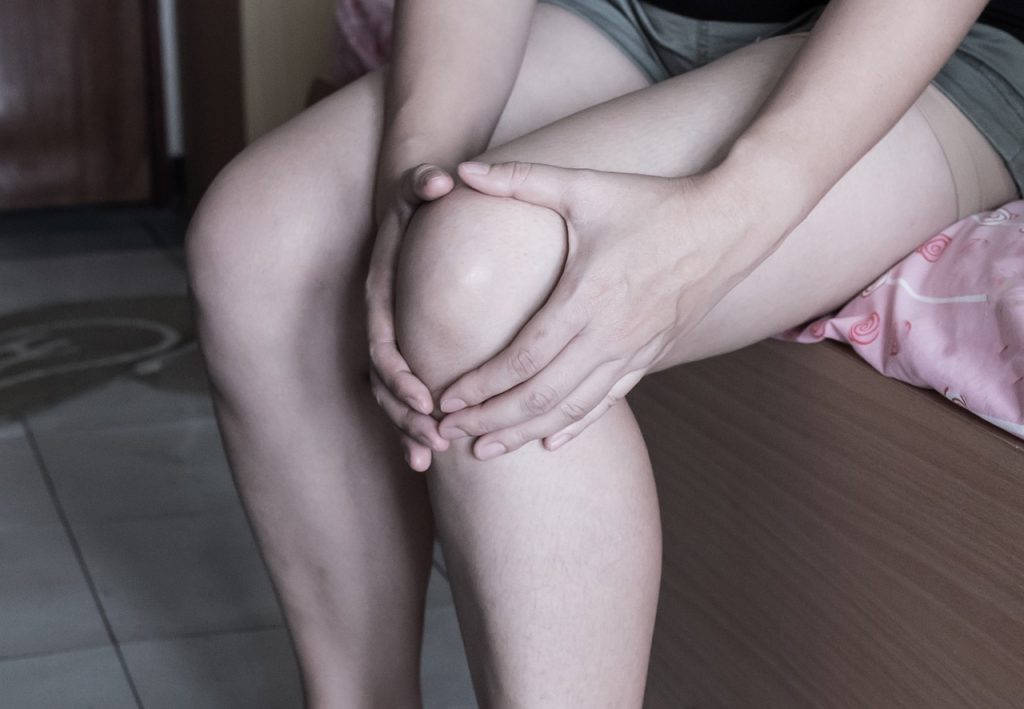
It is estimated that approximately 15 per cent of the UK population suffer with chronic joint pain at any given time. Regional joint pain — knee and hip joint pain — is even more common with 25 per cent of the population reporting additional symptoms including swelling, stiffness, loss of range of motion and instability.
Joint pain is more common in people over the age of 40 and in my experience, it is often difficult to manage due to multifactorial causes like lifestyle factors, referred pain, direct trauma and the presence of joint diseases like rheumatoid arthritis and osteoarthritis.
Osteoarthritis: How big is the problem?
Osteoarthritis is the most common form of age-related joint disease. The condition involves the deterioration of cartilage — the layer of resilient elastic tissue that covers the ends of your bones where it acts as a shock absorber, spreading the load evenly across your joints.
Your joints are exposed to constant wear and tear throughout your life, causing low-level damage. In healthy joints, your body repairs this damage before symptoms appear. But in osteoarthritis, the cartilage deteriorates, leading to the thickening of the bone underneath, bony growths form and the area becomes inflamed causing a combination of symptoms including joint pain (the most common symptom), morning stiffness, swelling and restricted range of motion .
Osteoarthritis mostly affects the hip and knee joints, with the highest prevalence of both conditions seen in women. In addition, overall, knee osteoarthritis is the most common form of the disease, with a prevalence of 18.1 per cent in both men and women in the UK.
It is expected that cases of osteoarthritis will double by 2020 and already 30 per cent of all doctors’ visits are the result of joint pain associated with the condition.
Unfortunately, there is no cure for osteoarthritis. However, by understanding the triggers of your joint pain along with an optimal management plan it is possible to see significant improvements in pain, function, and quality of life.
Both the National Institute for Health and Care Excellence (NICE) and Arthritis Research UK have developed guidelines to help combat joint pain. As always, core treatments form the foundation of these guidelines, which include self-management, exercise and weight loss. Other options include non-pharmacological and pharmacological treatments.
Using these guidelines as a framework here are 7 tips that I believe will help prevent and alleviate your symptoms of joint pain:
1. Know your risk and triggers
Being aware of the risk factors associated with joint pain enables patients to help prevent their symptoms from making life difficult in the first place.
In addition to age, weight-bearing activities or sports (including occupations that place repetitive stress on the joints), high bone mass or density, increased body weight (obesity), family history, hyperlaxity syndromes and joint injuries (fractures) are other risk factors to bear in mind.
2. Behavioural changes
Positive behavioural changes can affect how often symptoms flare up.
– Pace your activities throughout the day and don’t exert yourself by trying to tackle everything at once.
– Ladies, wear comfortable, low-heeled shoes with soft thick soles that will act like shock absorbers for your ankles, knees, hips and back.
– Use a walking stick to reduce the weight and stress on a painful lower limb joint.
3. Weight loss and diet
Maintaining a healthy weight is essential for optimum health and even more so if you are struggling with joint pain symptoms — more weight equals more pressure on the joints and greater damage to the cartilage.
In addition to losing any extra weight, eating more of a certain food and avoiding other types altogether can have a big impact on your joint health. For instance, omega-3 rich krill oil has shown to help reduce inflammation, joint pain, stiffness and improve range of motion. Other research has shown how consuming sugary fizzy drinks can trigger the release of inflammatory “messengers” called cytokines, which increased the risk of developing arthritis by 63 per cent.
4. Exercise
The key to joint health exercises is to focus on physical activities that increase the strength and tone of your muscles, like strengthening and aerobic exercises.
For knee joint pain, straight leg raises helps to stabilise and protect the joint. Swimming is also ideal because the water supports the weight of your body, relieving the strain on your joints while allowing you to exercise your core muscles.
5. Physiotherapy
A physiotherapist can help you with specific exercises tailored to your individual needs and capabilities. Massage therapy can also help with stress reduction, which can have a knock-on effect in reducing pain symptoms especially if stress is a trigger for pain flare-ups.
6. Pain reduction
Painkillers like paracetamol and non-steroidal anti-inflammatory drugs (NSAIDs) are used as the gold standard for reducing joint pain, stiffness and swelling. Take these at the lowest dose to only help control symptoms, but be careful of side effects like internal bleeding and liver toxicity.
For those who don’t want to use pharmaceutical painkillers, exciting new research has shown that curcumin, the active ingredient in the curry spice turmeric, possesses potent anti-inflammatory and anti-arthritic properties. In fact, a highly bioavailable form of curcumin used in this study was more effective in alleviating joint pain symptoms than the NSAID drug Voltaren.
7. Check your diabetes status
In recent years, a clear link between high blood sugar levels and osteoarthritis has been established. Researchers in France found that high blood sugar levels promote the production of enzymes that break down cartilage. And in another study, German researchers found that how your body metabolises blood sugar directly affect joint integrity, independently of body weight. They also found that adults with type 2 diabetes have a much higher risk of needing joint surgery for arthritis problems.
So, even if you are not overweight it’s important to check that you have healthy blood sugar levels.
